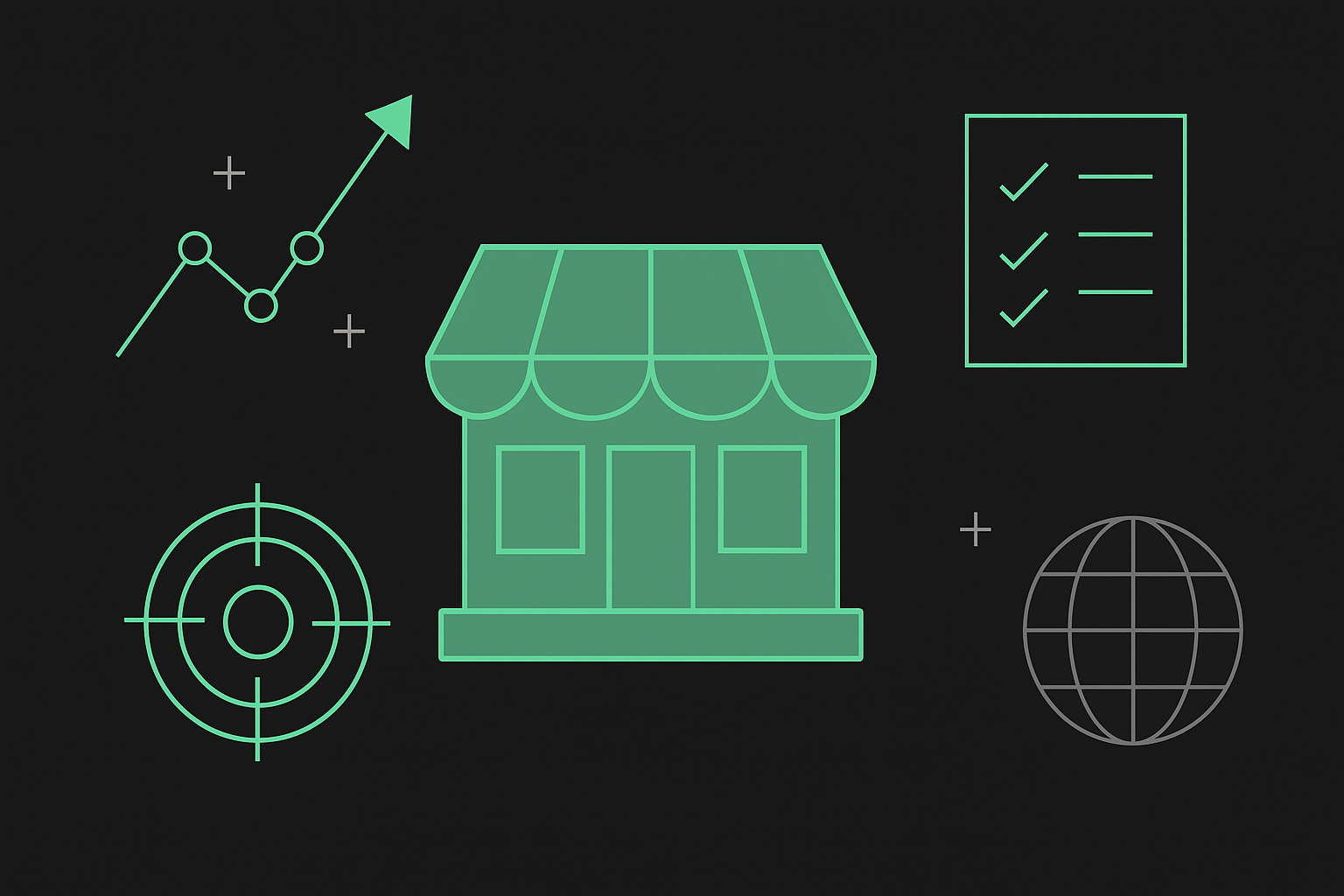Webflow vs Contentful: Which CMS Should You Choose in 2024?
The digital landscape continues to evolve, pushing the boundaries of website development and management. As we venture deeper, businesses are torn between two major players: Webflow and Contentful - each offering distinct benefits and limitations. This makes the choice between them not just a technical decision but a strategic one too.
So, how do you decide which one is right for your project?
We'll explore user-driven concerns and practical insights into how each platform can meet the demands of modern web development, focusing on customization, scalability, and overall CMS functionalities.
Webflow vs Contentful: What Type of CMS Platforms Are They?
Understanding the core functionalities of each platform will help set the stage for comparison, but it’s essential first to grasp the concept of headless CMS versus traditional CMS:
- Traditional CMS platforms like Webflow integrate both the front-end and back-end, allowing users to design and manage content within the same system. This integration simplifies the workflow and is ideal for users who want an all-in-one solution.
- Headless CMS platforms like Contentful decouples the back-end content management from the front-end presentation, allowing developers to use any front-end technology while managing content centrally.
Each caters to different needs and use cases, offering unique advantages. Here’s a quick breakdown of the two platforms:
Webflow: The All-in-One Website Builder and CMS
Webflow is a powerful website builder that combines a visual design tool with CMS capabilities. It's designed for users who want to build no-code websites. Webflow allows you to visually design your site using a drag-and-drop interface, while the underlying code is automatically generated, allowing for a seamless blend of design and development. Its core functionalities include an intuitive visual editor, built-in CMS integration, hosting services, and responsive design tools. Webflow is ideal for small to medium-sized businesses, freelancers, agencies, and marketing teams who seek a comprehensive solution that covers design, content management, and hosting.
Contentful: The Flexible Headless CMS
Contentful is a headless CMS designed to provide maximum flexibility and scalability. Unlike traditional CMS platforms, Contentful focuses solely on content management and delivery, leaving the front-end design and development entirely up to you. This approach allows developers to use any front-end technology they prefer, creating an omnichannel user engagement approach by integrating Contentful's powerful content infrastructure through APIs.
Contentful's core functionalities revolve around its API-first approach, highly customizable content model, scalability, and support for multi-platform content delivery. It’s particularly suitable for enterprise websites, developers, tech-savvy teams, and businesses that need to manage and distribute content across different channels and devices.
Webflow vs Contentful: Features Comparison
Pricing Structures and Potential Hidden Costs
Webflow's pricing structure is designed to cater to a wide range of users, from hobbyists to large enterprises. Its pricing typically includes comprehensive hosting and CMS capabilities, simplifying management and providing a cohesive, all-in-one solution. Contentful, on the other hand, operates on a usage-based pricing model where costs are tied to the amount of content, API calls, and other metrics.
Here’s a breakdown;

Webflow’s bundled approach helps keep initial costs lower and eliminates the need for separate hosting arrangements. However, Contentful does not include hosting in its pricing, so you need to arrange and pay for a separate hosting solution. Here are some hidden costs that may arise:
- High API usage
- Extensive storage needs
- Additional development environments
- Third-party services or custom integrations.
Webflow vs Contentful: CMS Functionality Comparison
Content Modeling and Structuring
Webflow excels in offering an intuitive, visual content modeling approach that integrates seamlessly with the design environment. Users can create and manage content types and fields with ease, making it ideal for straightforward projects. This user-friendly interface empowers designers to efficiently handle content without needing advanced technical skills, providing a practical and accessible solution for a variety of needs.
Contentful offers a more flexible content modeling system with advanced features that support rich field types and intricate content relationships. This flexibility makes Contentful ideal for projects needing detailed content organization and complex data modeling – particularly beneficial for large-scale or enterprise-level applications.
Content Creation and Editing Experience
Webflow provides a visual editor with WYSIWYG functionality, allowing users to design and edit content in real-time. Integrated asset management makes content creation straightforward, enhancing the overall user experience and benefitting users who value a streamlined, visually oriented workflow.
Contentful features a structured content editor with a customizable interface tailored to content management. This separation of content and design supports more advanced editorial workflows, including version control and collaborative editing. This setup is particularly advantageous for larger teams managing extensive content operations.
Localization and Multilingual Support
Webflow offers essential multilingual support, making it easy to manage content in multiple languages. Its manual translation features are user-friendly and effective for simpler localization needs, providing a solid foundation for businesses looking to reach a broader audience without complex setups.
Contentful provides advanced localization features, including multi-locale content delivery and sophisticated translation management. These tools facilitate the efficient handling of multilingual content and support complex localization strategies, making it a strong choice for businesses with international reach.
Development Approach and Flexibility
Webflow's Visual Development
Webflow stands out with its drag-and-drop interface for visual development, allowing users to build responsive websites without extensive coding knowledge. This approach is particularly advantageous for small businesses and individuals who want to create custom sites with ease and flexibility. Webflow’s visual design tools streamline the process, making it accessible and efficient for a wide range of users.
Contentful's API-First Strategy
Contentful’s API-first strategy offers significant flexibility for front-end development by separating content management from presentation. This headless approach allows developers to build and integrate custom, front-end solutions using APIs, which is ideal for creating scalable, modern websites and applications but requires more initial setup and development expertise.
Scalability and Performance
Scalability for Small to Medium Websites
Webflow is a perfect fit for small to medium-sized websites, offering an all-in-one solution that simplifies management and deployment. Its robust platform supports growth, and users benefit from a user-friendly experience that makes scaling up straightforward and manageable.
Contentful excels in scalability, making it suitable for both small and large projects. Its headless architecture supports growth and allows for extensive customization, although it might be overkill for very small or simple projects. Performance optimization can be more complex but offers flexibility for future expansion.
Scaling to Large, Enterprise-Level Websites
Webflow can handle larger sites but may face performance issues and limitations with very large datasets. Enterprise features are somewhat limited, which could be a constraint for highly-complex or large-scale websites. For scaling, explore Webflow’s enterprise plan for potential custom solutions, and optimize your site by conducting performance audits, streamlining design, and implementing advanced caching techniques to manage large datasets.
Contentful is designed with enterprise use cases in mind, offering a highly-scalable architecture that supports advanced governance and complex workflows. It’s well-equipped to manage large-scale content operations and handle high-traffic websites with robust performance optimization.
Integration and Extensibility
Webflow's App Marketplace
Webflow boasts a growing app marketplace with a diverse array of third-party integrations and extensions. This marketplace offers a variety of useful tools and functionalities that can enhance your site. While it may not be as extensive as some larger plugin ecosystems, the pre-built integrations available cover many common needs and can significantly streamline your development process.
Contentful's Integration Ecosystem
Contentful’s API-driven approach allows for extensive integrations with various tools and platforms. Its support for GraphQL and REST APIs enables seamless integration with modern front-end frameworks and other services, offering a high degree of flexibility for building multi-channel content strategies and custom integrations.
What to Consider When Migrating Between CMS Platforms
If you decide to migrate from one CMS platform to another, here are some things to consider:
Data Mapping and Content Transfer
Data mapping involves understanding the structure of your current content, including types, fields, and relationships, and determining how these elements will fit into the new CMS's architecture. By creating a detailed map of your existing data, you can ensure that all content is accurately represented and easily transferred. Following this, you need to develop a strategy for content transfer. This typically involves exporting data from the old CMS and importing it into the new one. Depending on the complexity of your content, you might use specific tools or plugins to assist with the transfer, but manual adjustments may be necessary for more intricate content structures. A smoothly executed transfer is key to maintaining content integrity.
URL Redirects and SEO Preservation
SEO preservation is another critical aspect of migration. To maintain your site's SEO value, you should implement URL redirections. This involves creating a comprehensive list of old URLs and mapping them to their new counterparts in the new CMS. By setting up 301 redirects, you inform search engines and users that the pages have moved, which helps preserve your SEO rankings and prevent broken links. Additionally, it’s important to review and preserve SEO considerations, such as meta tags, headers, and alt text. Correctly implementing these SEO elements in the new CMS will help maintain your site’s search engine visibility. After the migration, monitoring your site’s performance closely will help you address any SEO issues that may arise.
Design and User Experience
Maintaining design consistency throughout the migration is essential for delivering a coherent user experience. Compare the design and layout of your existing site with what the new CMS can support. Make any necessary adjustments to ensure that the visual and functional aspects of the site remain aligned with your brand’s identity and standards. Conducting user testing is also vital. This includes checking that all interactive elements work correctly and verifying compatibility across different browsers and devices. Thorough testing helps identify and resolve any issues before the site goes live, preserving a smooth and professional user experience.
Content Integrity and Testing
Verify that all content has been transferred accurately, checking for any missing or incorrectly formatted elements. This includes text, images, videos, and interactive features. Maintaining content integrity protects your site’s consistent and professional appearance. Comprehensive testing should follow to catch any issues that might not have been addressed during the initial content transfer. Testing should cover functional aspects, performance, and cross-browser compatibility to confirm that the site operates smoothly and meets quality standards.
Webflow vs Contentful: Which one is a better CMS in 2024?
Both Webflow and Contentful are top-tier CMS platforms, but their strengths cater to different needs. If you need a streamlined, all-in-one solution that combines visual design with content management, Webflow is your go-to choice. It’s particularly effective for small to medium-sized projects where speed and simplicity are key.
However, if your project demands greater flexibility, scalability, and the ability to manage content across multiple platforms with full control over the front end, Contentful might be a better option.
Whether it's the efficiency and ease of Webflow or the flexibility and control provided by Contentful, the final choice hinges on the unique goals and requirements of your project.
Not sure which CMS platform is right for you? Let’s make it easy. Book a strategy call, and we’ll help you find the perfect fit.










